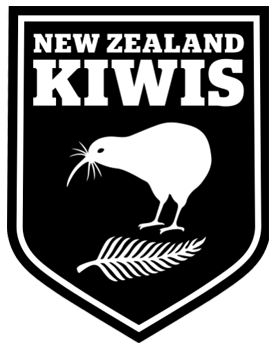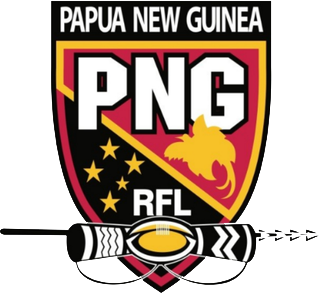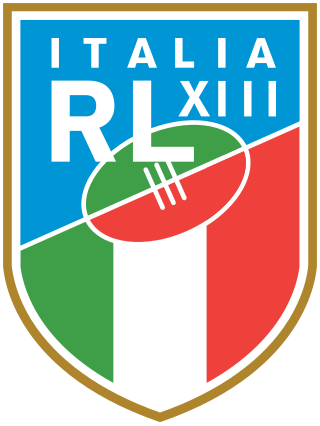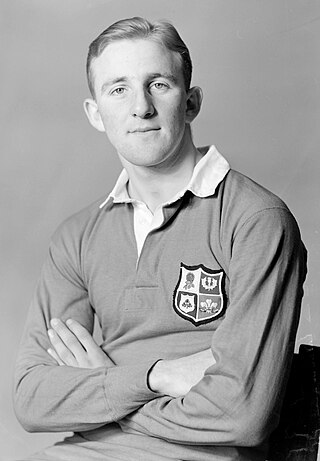Related Research Articles

The Great Britain national rugby league team represents Great Britain in rugby league. Administered by the Rugby Football League (RFL), the team is nicknamed The Lions.

The Australia national rugby league team, the Kangaroos, have represented Australia in senior men's rugby league football competition since the establishment of the game in Australia in 1908. Administered by the Australian Rugby League Commission, the Kangaroos are ranked third in the IRL Men's World Rankings. The team is the most successful in Rugby League World Cup history, having won the competition 12 times, and contested 16 of the 17 finals, only failing to reach the final in the 1954 inaugural tournament. Only five nations have beaten Australia in test matches, and Australia has an overall win percentage of 69%.

The New Zealand national rugby league team has represented New Zealand in rugby league since 1907. Administered by the New Zealand Rugby League, they are commonly known as the Kiwis, after the native bird of that name. The team's colours are black and white, with the dominant colour being black, and the players perform a haka before every match they play as a challenge to their opponents. The New Zealand Kiwis are currently first in the IRL World Rankings. Since the 1980s, most New Zealand representatives have been based overseas, in the professional National Rugby League and Super League competitions. Before that, players were selected entirely from clubs in domestic New Zealand leagues.

The France national rugby league team represents France in international rugby league matches. They are referred to as les Chanticleers or less commonly as les Tricolores. The team is run under the auspices of the Fédération Française de Rugby à XIII.

The England national rugby league team represents England in international rugby league.

The Wales national rugby league team represents Wales in representative rugby league football matches. Currently the team is ranked 17th in the IRL World Rankings. The team was run under the auspices of the Rugby Football League, but an independent body, Wales Rugby League, now runs the team from Cardiff. Six Welsh players have been entered into the Rugby League Hall Of Fame.

The Papua New Guinea national rugby league team represents Papua New Guinea in the sport of rugby league football.

The Tonga national rugby league team represents Tonga in rugby league football. They are currently the fifth ranked team in the world. The team was formed to compete in the 1986 Pacific Cup, and have competed at six Rugby League World Cups, starting in 1995 and continuing consecutively until the most recent tournament. Their best result was at the 2017 Rugby League World Cup, where they were semi-finalists.

The Cook Islands national rugby league team have represented the Cook Islands in international rugby league football since 1986. Administered by the Cook Islands Rugby League Association (CIRLA), the team has competed at three Rugby League World Cups, in 2000, 2013 and 2021, and are coached by Karmichael Hunt.

The Italy national rugby league team represents Italy in rugby league football. With origins dating back to the 1950s and 1960s, the team has competed regularly in international competitions since 2008, when their current governing body, the Federazione Italiana Rugby League, was formed. They are currently ranked 16th in the IRL World Rankings.
The South Africa national rugby league team to date have competed at two Rugby League World Cups in 1995 and 2000.

Benjamin Lewis Jones is a Welsh former rugby union and rugby league footballer who played in the 1950s and 1960s. A dual-code rugby international he won nine caps for Wales at full-back, centre, wing, before turning professional and playing rugby league for Leeds, Great Britain, Other Nationalities and Wales. Rugby league historian Robert Gate has described Lewis Jones as "arguably the most devastating attacking back Wales has ever produced." His acceleration over the first few yards allowed him to penetrate almost any defence in the mid-1950s.
Jacques Merquey also known by the nickname of "Jackiew", as a French rugby footballer of the 1950s. A dual-code rugby international, his position was centre, later in his career this changed to stand-off. While Merquey started in union, he played the vast majority of his career in rugby league. He played his club rugby league for Marseille, Sporting Olympique Avignon XIII and Lezignan, becoming the most capped International, with 37 games for France. Merquey is the only Frenchman to play in the first three successive World Cups, in 1954, 1957 and 1960.
William John Smith is an Australian former rugby league footballer. He was the leading halfback in Australian rugby league during the late 1960s, and a keystone of the latter part of the St. George Dragons' eleven consecutive premiership victories between 1956 and 1966. He represented Australia in eighteen Tests and eight World Cup games between 1964 and 1970. He captained Australia in a World Cup game against Great Britain in 1970.
George Fairbairn is a Scottish former rugby union and professional rugby league footballer who played in the 1970s and 1980s, and coached rugby league in the 1980s and 1990s. He played representative level rugby union (RU) for Borders, and at club level for Kelso RFC, and representative level rugby league (RL) for Great Britain and England, and at club level for Wigan, winning the Man of Steel Award in 1980, and Hull Kingston Rovers, as a goal-kicking fullback, and coached at representative level rugby league for Scotland, and at club level Wigan, Hull Kingston Rovers, and Huddersfield.
Steve Nash is an English former professional rugby league footballer who played in the 1960s, 1970s and 1980s, and coached in the 1980s. A Great Britain and England national representative and scrum-half, he played his club rugby for Featherstone Rovers, winning a Challenge Cup title with them and being one of the inaugural inductees into the club's hall of fame. He also played for the Salford club and at representative level for Yorkshire. Nash later coached the Mansfield Marksman club for a season in 1989.
John William Whiteley MBE was an English professional rugby league footballer and coach. He played his entire club career with Hull FC making over 400 appearances between 1950 and 1965. He also represented Great Britain at international level, winning the Rugby League World Cup with the team in 1954 and 1960.

Donald Robinson was an English World Cup winning professional rugby league footballer who played in the 1940s, 1950s and 1960s, and coached in the 1960s and 1970s. He played at representative level for Great Britain, England, Yorkshire and Rugby League XIII, and at club level for St Joseph's School, Airedale Youth Club, Fryston Colliery, Kippax Juniors, Newmarket Colliery, Wakefield Trinity (captain), Leeds and Doncaster, as a centre, prop, second-row or loose forward, i.e. number 3 or 4, 8 or 10, 11 or 12, or 13, during the era of contested scrums, and coached at Doncaster and Bramley (late-1970s).

José Calle was a French rugby union and professional rugby league (RL) player who represented France (RL).
Claude Teisseire is a French former professional rugby league footballer who represented France at the 1954 Rugby League World Cup. Although he could not take part to the 1951 tour of Australia and New Zealand due to a knee injury, he took part to the 1955 tour which concluded with two wins in three test matches. He played as halfback and centre. At club level, he played for AS Carcassonne and Lézignan. For many years, he formed a formidable centre combination with Gilbert Benausse. Later, he became a rugby union coach and referee.
References
- ↑ Joseph Krawzyk rugbyleagueproject.org